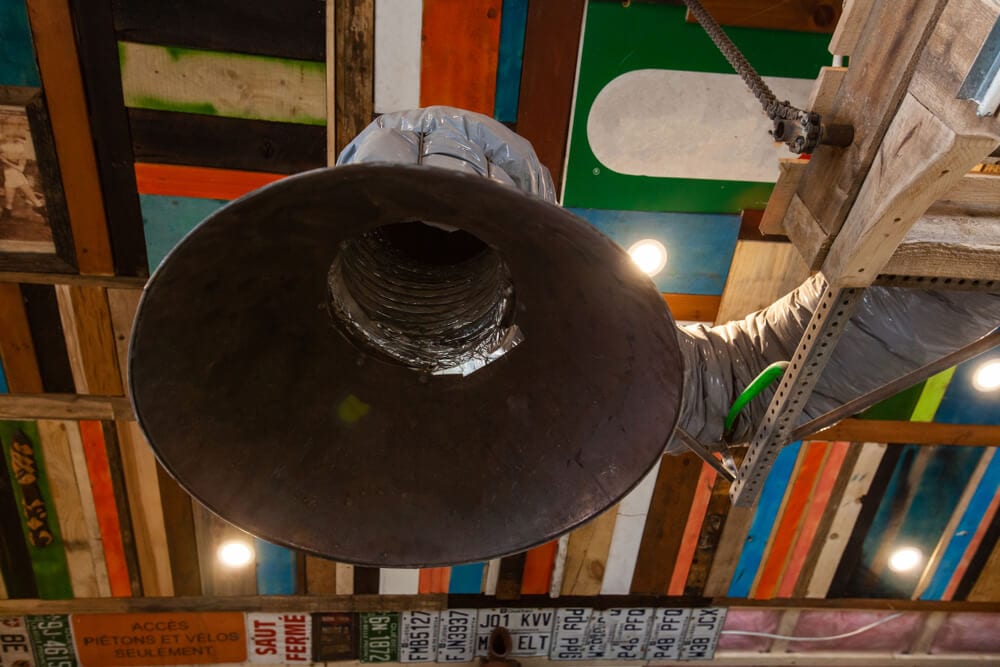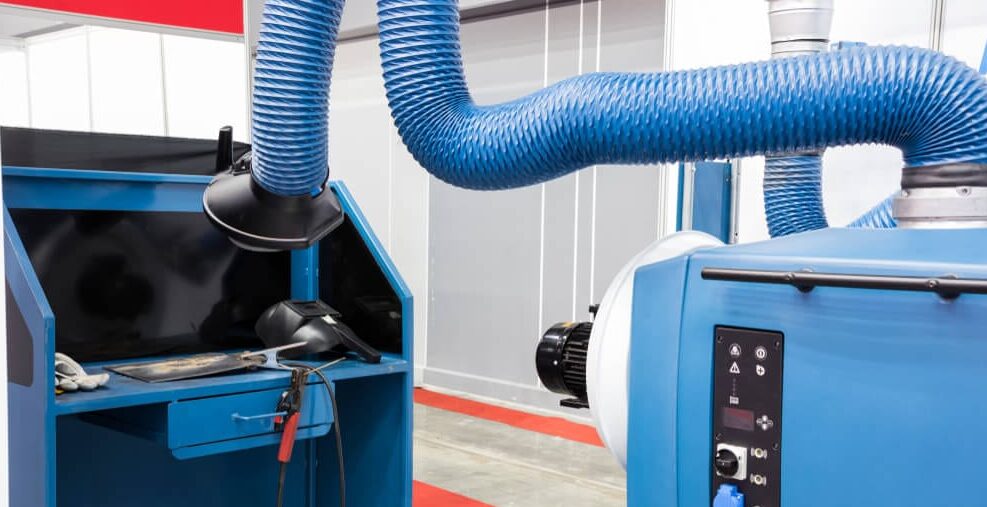Working in the power and industrial fields is a rewarding experience. Additionally, this work has risks due to working with large machinery and industrial combustion systems. Combustion system safety comes first for every worker in these industries.
Dust extraction systems are essential for workplace safety as they help control combustible dust. To avoid the risk of fire and explosion in your workplace, you need to be equipped with the most productive extraction system on the market.
Keep reading to learn which dust extraction systems we recommend to keep you, your employees, and your workplace safe.
What Is Combustible Dust?
Is combustible dust different from the regular dust in your home? And why do you need an industrial system to control it?
Combustible dust is in fact much different than dust on a bookshelf or picture frame. Combustible dust is any fine particle that has the ability to catch fire and explode when mixed with certain air conditions.
Combustible dusts can contain particles from:
- Metals
- Sugar
- Flour
- Wood
- Grain
- Pesticides
- Rubber
- Plastics
- Textiles
Many of these materials are not normally thought of as combustible. However, if the particles are the right size and in the right concentration, they can burn or erupt.
Similar to dust in your home, combustible dust can collect on a wide variety of surfaces. You can find combustible dust on:
- Roofs
- Drop ceilings
- Rafters
- Ducts
- Fissures
- Other workplace equipment
Letting even a small amount of combustible dust build up can cause serious damage. If the dust is disrupted in the correct circumstances, there is a large risk for a dangerous explosion. Dust explosions can cause injuries, deaths, and the destruction of entire buildings. In many previous combustible dust explosions, staff members were unaware that the hazard existed.
Fires are caused by 3 elements working together: oxygen, heat, and fuel. In this case, the fuel is combustible dust. Dust explosions occur when 5 elements work together: oxygen, heat, fuel, dispersion, and confinement.
Dispersion is when dust particles scatter in a large quantity. Confinement refers to the event occurring in an enclosed structure such as a room, building, or piece of equipment. If one of the 5 elements are missing, an explosion will not take place.
How to Best Control Combustible Dust
It is paramount to assess if your workplace has a combustible dust hazard. Research and ask yourself these questions about your workplace:
- Do you manufacture or use materials that can become dust?
- Does your workplace perform tasks that create dust, such as cutting, blasting, polishing, or grinding?
- Does your workplace have ignition sources such as sparks, stoves, or welding flames?
- Can dust accumulate on equipment or overhead structures?
If you perform research that suggests the dust in your workplace is combustible, you need to take preventative measures to control it.
Implement a dust inspection and care plan for combustion systems, and be sure to use cleaning methods that do not result in dust clouds. Upgrade to surfaces that minimize dust accumulation.
Most importantly, install a proper dust extraction system. Dust extraction systems control and eliminate combustible dust from a confined space. Extraction systems are superior to fans which end up stirring the dust and making the situation worse.
Place the inlet of the extraction system as close to the dust production as possible. The inlet can be connected to a duct system that connects to multiple machines throughout the workplace. The duct system will either filter the air and return it to the workplace, or it will expel all of the contaminated air into the atmosphere.
ENGLO Dust Extraction Technology
At Lindberg, we recommend ENGLO dust extraction systems for workplaces that need an extraction system. ENGLO systems are efficient, compact, and reliable. These incredible systems are designed to remove 99.7% of combustible dust particles from dirty airstreams.
ENGLO dust extractors are unique because they encapsulate the dust particles into atomized water. These systems are versatile and allow for multiple uses.
ENGLO features a product range of 16 impressive models that are sure to accomplish the specific needs of your workplace. ENGLO professionals perform a 5-step procedure to ensure that your workplace is properly equipped:
- Site Specific Evaluation. They match the highest possible quality with your budget.
- Unit Sizing. The project engineer determines any additional equipment or ducting needed to complete the installation.
- Application and Engineering. ENGLO recommends a dust extractor that best fits the needs of the customer. Engineers assist in the design and layout of the system.
- Manufacture and Delivery. ENGLO custom manufacturers every extraction unit. Delivery is coordinated with the needs of the client.
- Commissioning. Only the best installers are hired by ENGLO, and they ensure proper installation. ENGLO engineers are available for startup and commissioning.
Industries That Benefit From Dust Extraction Systems
Any workplace that generates dust through cutting, blasting, crushing, or mixing dry materials is potentially at risk of combustible dust. However, certain industries are almost guaranteed to benefit from a dust extraction system:
- Underground coal mining
- Cold-fired power plants
- Food production facilities
- Chemical manufacturing
- Woodworking facilities
- Metal processing plants
- Recycling facilities
Do you see your industry on that list? Be sure to conduct the proper hazard inspections and begin the process of ordering a dust extraction system if you have not already. A high quality dust extraction system in your workplace could be the difference between the life and death of your workers.
Stay Safe With Dust Extraction Systems
Keep your workplace and the people in it protected from combustible dust explosions by installing a dust extraction system. Even after the system is installed, be sure to stay on top of a care and housekeeping schedule in your workplace.
As technology continues to advance, our industries can be safer for us and the next generation of workers. Are you ready to protect your workplace with an efficient ENGLO dust extraction system? Contact a Lindberg representative who will be happy to help get you started on your path to a safer workplace.






